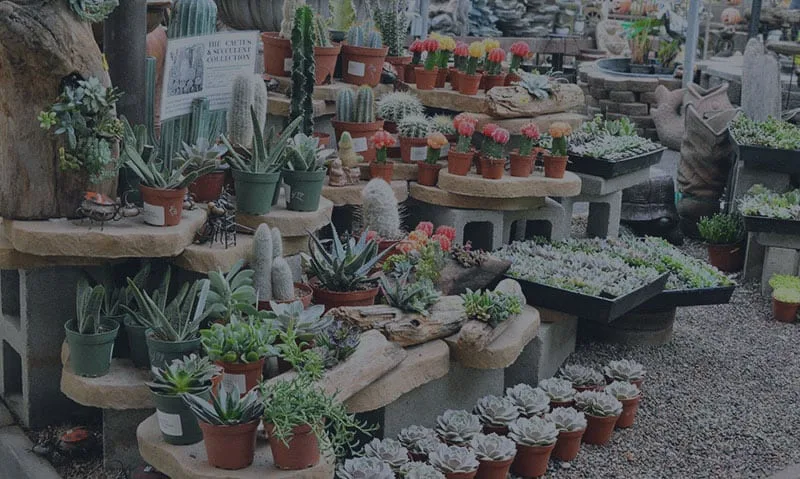Newsletter Articles
Companion Plants That Grow Well Together In Your Southern California Garden
Written by Kelsey W.
Companion plants are those that work well together for reasons like pest control or appearance. When your garden is in the planning stages, you can make some strategic decisions to plant species that grow well together and that will bring a natural balance to your garden.
If you’re thinking about planting a beautiful flowering plant that just happens to be the favorite food of a particularly vicious pest, there might be another plant you can place nearby that will attract other insects that will actually eat the pests you don’t want around.
In other cases, planting certain fruit-producing plants near one another can result in more bountiful harvests due to the way some plants attract pollinators. Insects like bees perform a vital function for the plants that need them to visit each year. Companion plants can attract bees and ensure all the plants in your garden thrive.
How Do Companion Plants Work Together?
First, let’s explore how companion plants benefit one another. One of the most beneficial aspects of putting companion plants together in your garden is that they may attract or repel insects. Some plants might attract pollinators with great ease while other plants might repel pests.
For example, aphids love munching on vegetable plants, and they’re difficult insects to deal with once they infest a plant. However, they don’t really like marigolds, so you can use marigolds as a companion plant to repel aphids that might otherwise want to eat your broccoli, kale, or cauliflower.
You can even “sacrifice” a plant so that your other plants won’t have to deal with an insect infestation. Let’s stick with the example of aphids. They love eating nasturtiums. You can plant nasturtiums that will attract aphids, and they might forget all about the broccoli you’re also trying to grow.
Another way that companion plants work together is by feeding nutrients to one another. As far as vegetables go, the classic example of squash, beans, and corn is a popular option for companion planting. When you plant these three crops together, the squash leaves give shade to the beans and corn, while the beans and corn feed the squash nitrogen via the soil.
Pest Repellent Companions for Your Garden
It’s terrible to put so much time and effort into growing your vegetable garden only to find that a hungry insect invader has decided to make a meal out of your plants. While it’s possible to employ chemical means to get rid of pests, sometimes you can skip the pesticides and just use certain plants instead.
The plants you use will usually depend on what type of pests you’re trying to repel and what you’re trying to protect. For example, if you hate mosquitos and flies and you’re just interested in having the opportunity to enjoy your flower garden without the intrusion of tiny bitey things, lavender might be the key.
And you’re in luck as a Southern California resident, too, because lavender is a popular and well-growing plant in the Southland. The fragrance is nice for people, but some annoying bugs really don’t like it, so a thick patch of lavender can help you create a less buggy outdoor space.
If you’re growing a big area of leafy vegetables, you might find yourself under attack from snails and slugs. Even though they might not look harmful, and you can usually relocate them without too much fuss, they can still do quite a bit of damage to your plants.
That’s where rosemary comes in handy as a companion plant since snails and slugs don’t like the smell of the natural oils that emanate from rosemary. The bonus is that rosemary is also something you can use in your kitchen as an herb, as well as in aromatic tinctures in your home.
When your garden features plants beloved by aphids, one of the best companion plants you can choose is garlic. The plant is quite odiferous even when it’s growing in the ground, so you probably need to enjoy the smell of garlic to use this plant effectively.
One of the benefits of using garlic to repel aphids is that it grows in full sun and is also easy to grow, so it’s perfect for the sunny conditions often present in Southern California. As a bonus, garlic also repels cabbage loopers, which may feast on your broccoli or cauliflower.
Companion Plants to Enrich the Soil of Your Yard, Garden, or Terrace
One of the most important things you can do for your garden is make sure the soil is rich with nutrients, so your plants will have a happy home.
You may already know about the concept of crop rotation and how farmers will rotate what crops they have in one field to another, so those new crops will infuse the soil with nutrients like nitrogen that the next generation of crops will get to enjoy a few years down the line.
The most obvious example you might already be aware of is peas, but are you really going to plant an entire field of peas in your backyard? Well, maybe, if you have the space! But more realistically, one interesting way you can infuse the soil with nitrogen for your plants is to use clover.
Clover grows swiftly, and you can use it to infuse the soil with nitrogen after you take out one set of plants and before you plant another. The roots of the clover will even work their way through the soil, loosening it up and making it the ideal place for new plantings when the planting season comes along.
Another awesome companion plant that’s particularly useful in Southern California is the sunflower, which will enrich the soil during its growing season in the summer and then naturally die out in the winter, allowing you to grow some winter vegetables in newly enriched soil.
If you’re thinking about a flower garden, one excellent companion plant for your display is lupine, which acts as a stabilizer for the nitrogen content in the soil. As far as appearances go, lupine is a great companion for tulips since they both produce flowers in the spring. Irises are another excellent flower to pair with your lupines.
Sometimes It’s the Opposite, And Plants Don’t Like One Another
In the same way that some plants will work together when they’re planted next to one another, other plant pairings might not fare so well when there are limited nutrients or space for the plants. If you have two plants that need a nitrogen-rich environment, they might compete for the same nutrients.
A simple example is planting cabbage near tomatoes. Cabbage plants are voracious eaters when it comes to using the nutrients in their soil, and if you plant them near tomatoes, the tomato plants might not have enough strength to fight off the cabbage plants for their own nutrients.
You don’t really need to worry about these ill pairings if you’re going with a container garden, and you probably don’t even need to really focus on the complexities of crop rotation unless you’re going full bore into urban farming at your SoCal home.
However, it’s never a bad idea to conduct a little research into what plants might work best together and which plants you might need to place far away from one another for optimal growth. There are no absolutes when it comes to gardening, but a little knowledge can go a long way.
When creating your future garden, start with a list of the plants you’d like to have in your garden – whether they’re vegetables you’d like to harvest for your family meals or flowers you want to enjoy – and look at their nutrient needs, as well as what sorts of pests they might attract or repel.
Find Your Friendly Companion Plants at Green Thumb Nursery
Green Thumb Nursery offers all the information and help you need to create an amazing outdoor space for your home. Whether you live in an apartment and want to create a healthy container garden or you want to fill your home’s yard with healthy plants, the experts at Green Thumb Nursery can help you make the right decisions for your yard. Drop by one of our Southern California garden centers for your next beautiful plant.
Do you like what you see? Sign up ford our weekly newsletter to get content like this every week!


